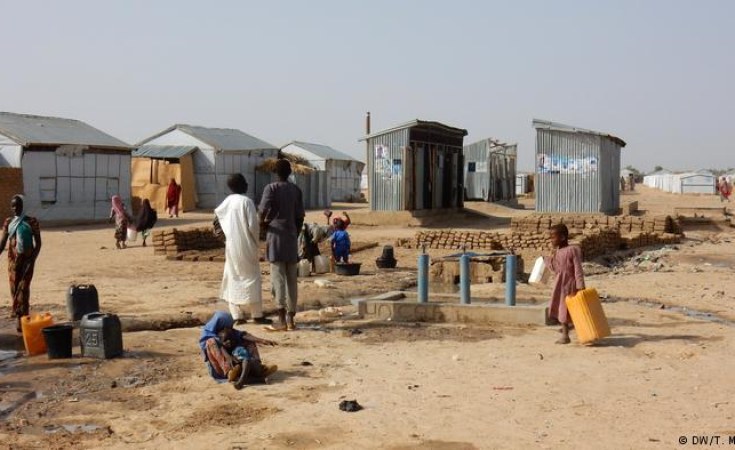Boko Haram factions continually adapt to new counter-terrorism tactics, so strategies must be flexible and systematic.
Operation Lake Sanity has had some success against Boko Haram in the Lake Chad Basin, but the insurgents will soon adapt to the new military tactics. To sustain the gains made, the Multinational Joint Task Force (MNJTF) leading the operation must stay ahead of these dynamics.
For more than 15 years, the Boko Haram insurgency has inflicted an unprecedented security and humanitarian crisis on the Lake Chad Basin. The atrocities have resulted in over 50 000 deaths, 3.2 million displaced persons and 280 000 refugees. More than 11.1 million people need humanitarian aid across the region.
Before Lake Sanity, many military operations, such as Hadin Kai by the Nigerian army, Emergence 4 by the Cameroonian army, and Wrath of Boma by Chad's army, were initiated against Boko Haram's two factions - Islamic State West Africa Province (ISWAP) and Jama'tu Ahlis Sunna Lidda'awati wal-Jihad (JAS). The operations achieved significant successes but faced challenges posed by the groups' resilience and continual adaptation to emerging security strategies.
After the first phase of Lake Sanity from March to June 2022, the MNJTF launched a second phase in April 2024 with troops from Cameroon, Chad and Nigeria. The operation aimed to neutralise Boko Haram's remote bases and hideouts on the islands.
The MNJTF commander's mid-term report says the operation led to at least 140 insurgents being 'neutralised,' the arrest of 57 people involved in violent extremist activities, and the surrender of some 176 Boko Haram fighters and associates. Substantial military equipment and logistical support items were seized, and several production workshops for improvised explosive devices (IED), logistics bases and insurgent gathering areas were destroyed.
The extensive losses suffered by the violent extremists caused a visible decrease in their assaults and a rise in people leaving the groups, including some command-level individuals, the report said.
However, these successes led to the dispersal of fighters to peripheral areas, where they began attacking civilians. There are reports of communities being harassed and an increased use of IEDs and suicide bombers, including by ISWAP. On 29 June, for example, four suicide bombers killed at least 32 people in Gwoza, northeastern Nigeria.
Boko Haram activities in the border areas between Cameroon and Nigeria, and on the Lake Chad islands have increased. Areas that were relatively spared from atrocities, such as Cameroon's North Region, in particular the Mayo-Rey Department bordering Chad and the Central African Republic, are experiencing an upsurge in insecurity. This includes kidnappings for ransom and the proliferation of munitions and light calibre weapons.
On 29 July, the North Region's capital Garoua narrowly escaped a Boko Haram bomb attack when police were alerted and defused the device. In Niger, Boko Haram activities have escalated, including vehicle theft in the Diffa Region. In May, at least five 4X4 vehicles were hijacked on a national road on the Mainé-Soroa-Diffa axis.
Soldiers' success in accessing dangerous ISWAP strongholds on the Lake Chad islands forced the group to deploy suicide bombers, including high-profile members like Abba Yusuf, son of the late Boko Haram founder Mohammed Yusuf.
The use of vehicle-borne IEDs and those buried in the ground poses a grave risk for security forces, and calls for demining operations and technologies like mine-resistant ambush protected vehicles.
Boko Haram's use of IEDs and suicide attacks propagates fear and disrupts both community cohesion and military efforts. These tactics must be tackled head-on to prevent a resurgence and return of the terrorist factions.
The interconnectedness of insecurity across the region also poses risks. In previous encounters, Boko Haram lost significant strongholds such as Sambisa and Alagarno but showed an alarming ability to reorganise and consolidate after being dispersed. This pattern isn't unique to Boko Haram; similar tendencies have been observed in other criminal and armed groups in the Lake Chad Basin region.
So while Operation Lake Sanity has yielded successes, the evolving landscape of insecurity wrought by Boko Haram necessitates a flexible approach, focused at this stage on attacks in outlining areas and the use of IEDs.
With Operation Lake Sanity, the MNJTF opted to target Boko Haram's hideouts, and this proved successful. Other hideouts in the region - mainly on islands, in swamps and forest zones - should also be secured to prevent them being used as operational bases. Such efforts may require adapted equipment for security forces, including combat equipment for use on water.
A systematic and comprehensive strategy for securing and monitoring peripheral areas is vital. This should include regular operations by combined forces from Lake Chad Basin countries to prevent Boko Haram from redeploying its fighters to these areas. This strategy would preserve the stability achieved in certain localities and avoid pressure from new waves of people who have been forcibly displaced.
The presence of police and gendarmerie must also be bolstered in peripheral regions to counter immediate security threats and foster trust within communities.
Finally, engaging with local communities in these areas will enable intelligence gathering and create a united front against the insurgents. Existing community development efforts as part of the Lake Chad Basin Commission's regional stabilisation strategy should be ramped up, including civil-military actions by the MNJTF.
Underlying all these strategies is the need for more humanitarian aid and socio-economic support for affected communities. This will reduce their vulnerability to the propaganda and recruitment tactics used by violent extremists and other criminal groups.
Remadji Hoinathy, Senior Researcher, Central Africa and Lake Chad Basin, ISS
Célestin Delanga, Researcher, ISS Regional Office for West Africa and the Sahel


